

Lafayette Square
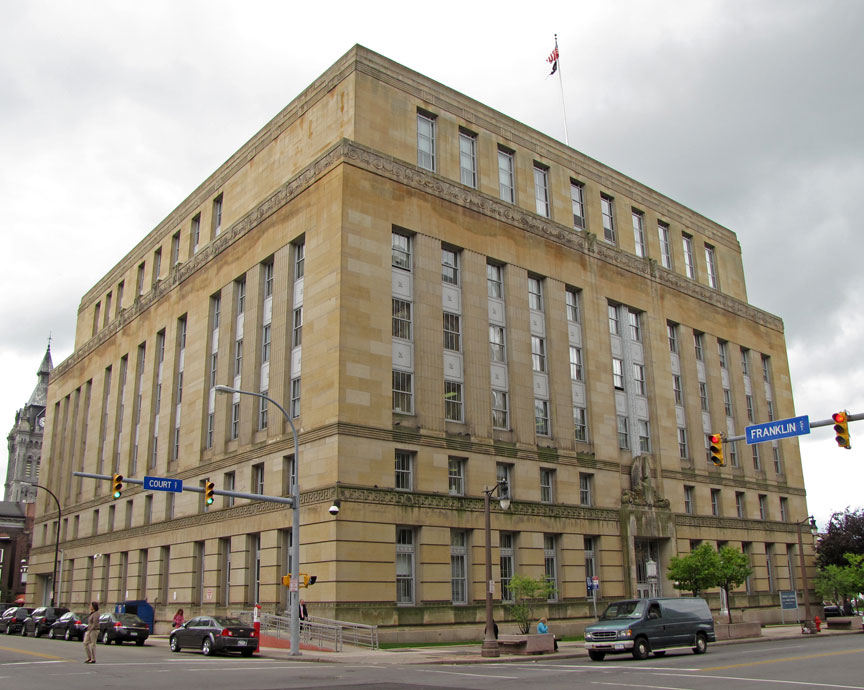
United States Court House
Lafayette Square (formerly Court House Park or Courthouse Square) is a park in the center of downtown Buffalo, Erie County, New York, United States that hosts a Civil War monument. The block, which was once square, is lined by many of the city's tallest buildings. The square was named for General Lafayette, who visited Buffalo in 1825.
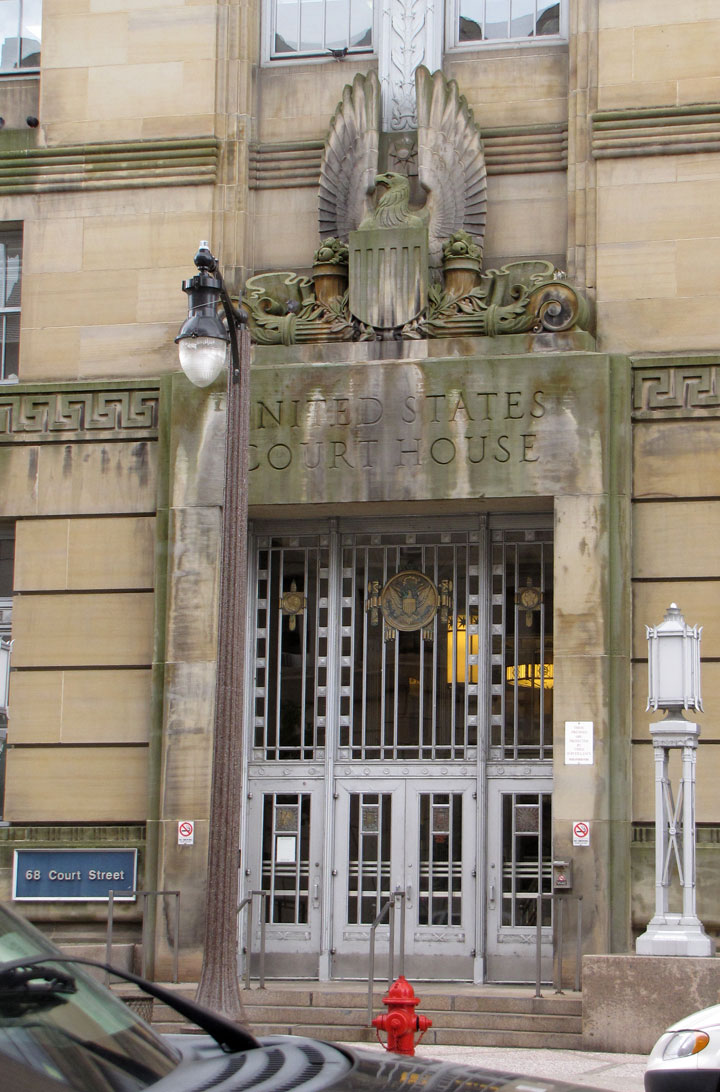
The square was part of the original urban plan for the city as laid out by
Joseph Ellicott in 1804. Its eastern edge has long been defined by important
civic structures; first, the Erie County Courthouse, followed by the original
Buffalo & Erie County Public Library. Presidential history was made in Lafayette
Square when former United States President Martin Van Buren received the Free
Soil Party nomination for the 1848 election. President-elect Abraham Lincoln
also spoke at the square.
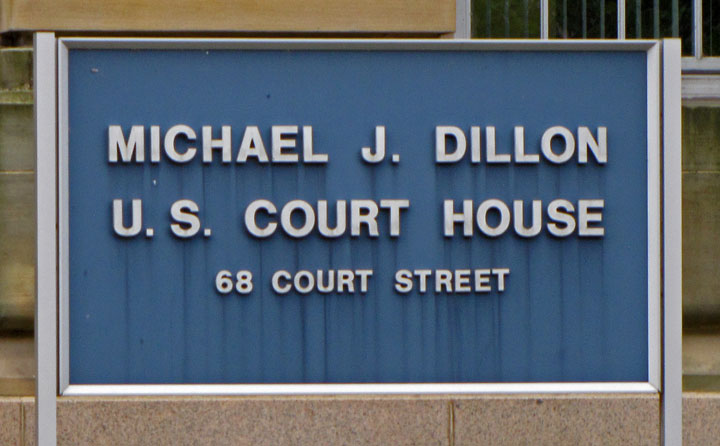
Today, the square offers a clear view of Buffalo City Hall, an Art Deco building
three blocks to the west. A granite Civil War monument, titled Soldiers and
Sailors, gives a strong vertical and ceremonial definition to the space.
Conceived by Mrs. Horatio Seymour, the monument's dedication ceremony was
attended by Grover Cleveland and other prominent figures. Today, Lafayette
Square hosts the annual Thursday at the Square summer concert series and is
occasionally the site of rallies and demonstrations.
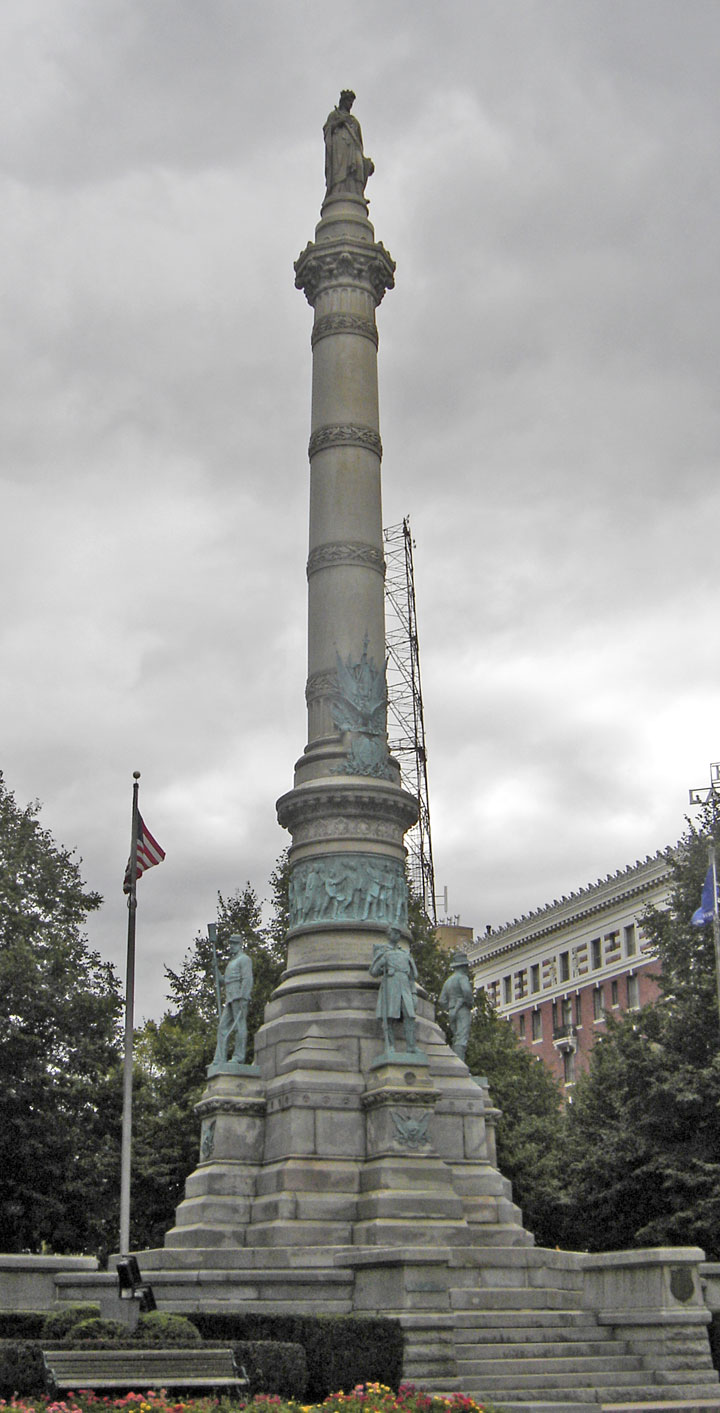
Soldiers and Sailors Monument
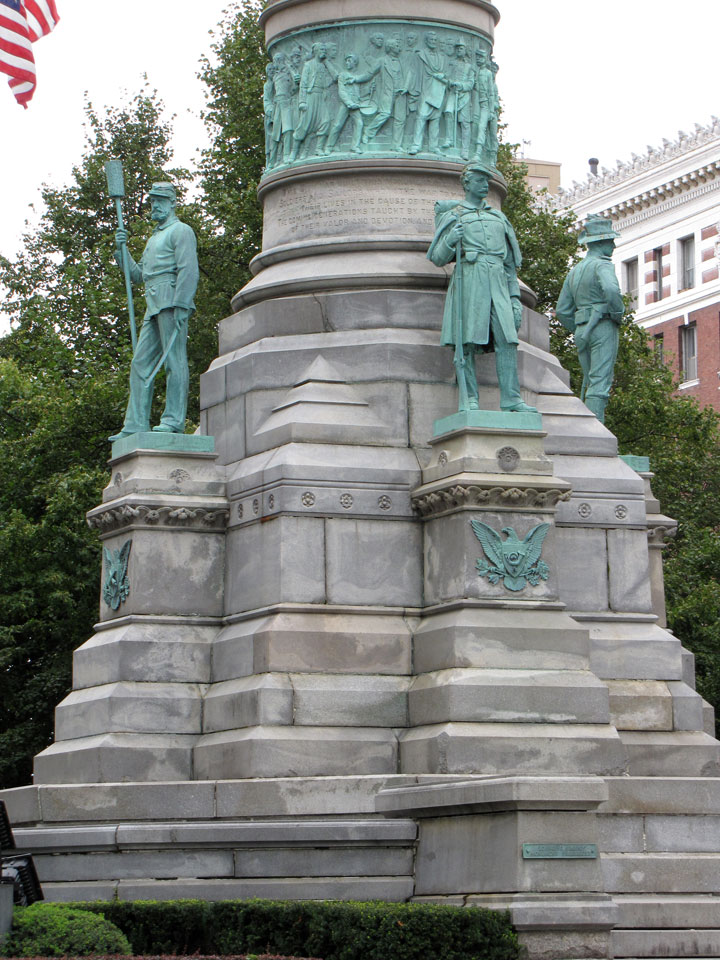
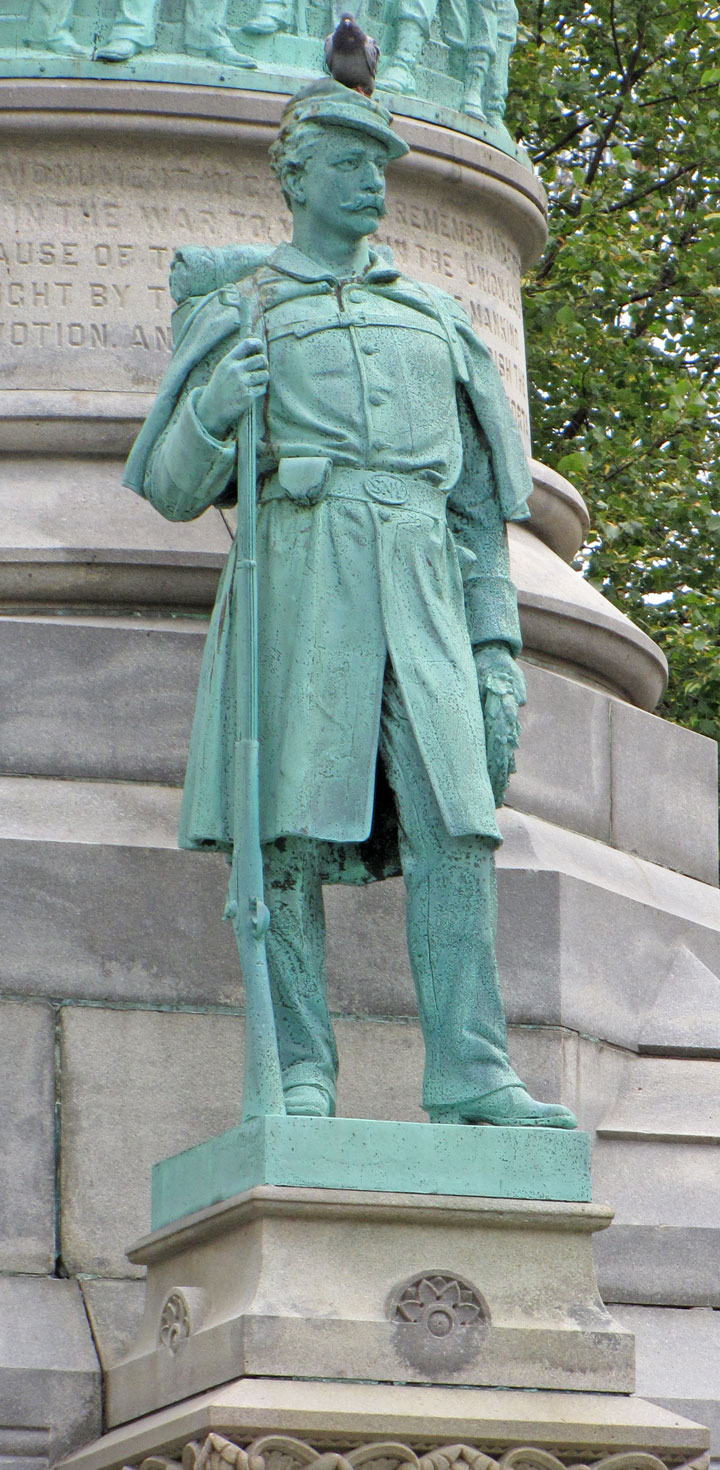
Lafayette Square is one of three squares laid out in Joseph Ellicott's city
plan. The square is located three blocks east of Niagara Square and is the
second most important space in downtown Buffalo. The block is surrounded by the
Niagara Frontier Transportation Authority's Metro Rail light rail rapid transit
to the west, which runs above-ground along Main Street in what is called the
Free Fare Zone, Washington Street to the east, Lafayette Square to the north (a
one-way westbound continuation of Broadway Street) and Lafayette Square to the
south (a one-way eastbound connection to Clinton Street).

Art Deco building
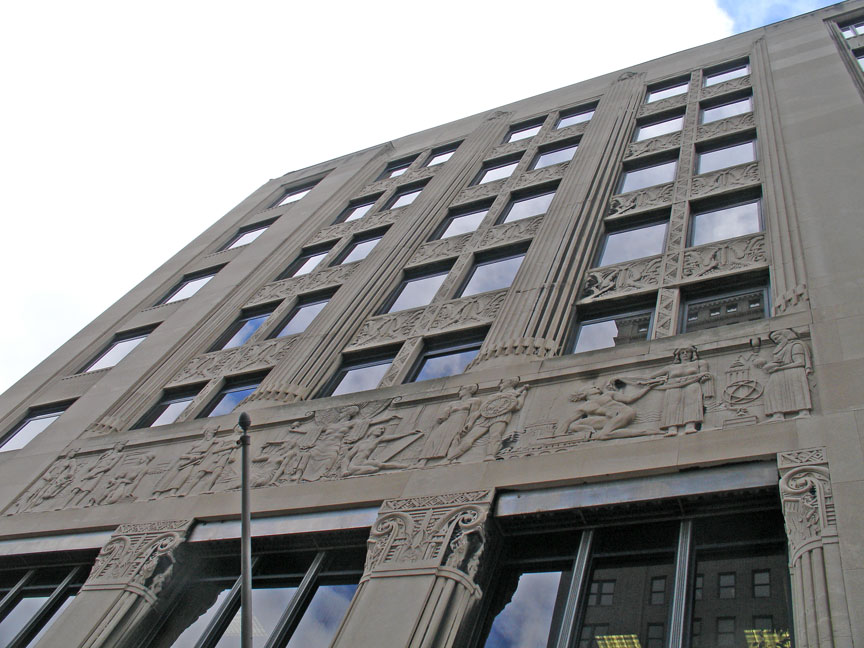

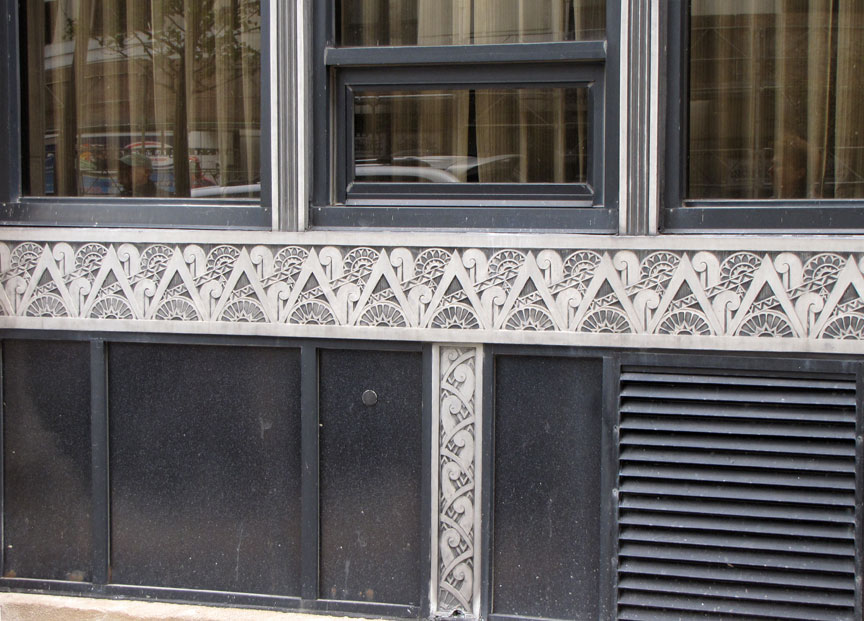
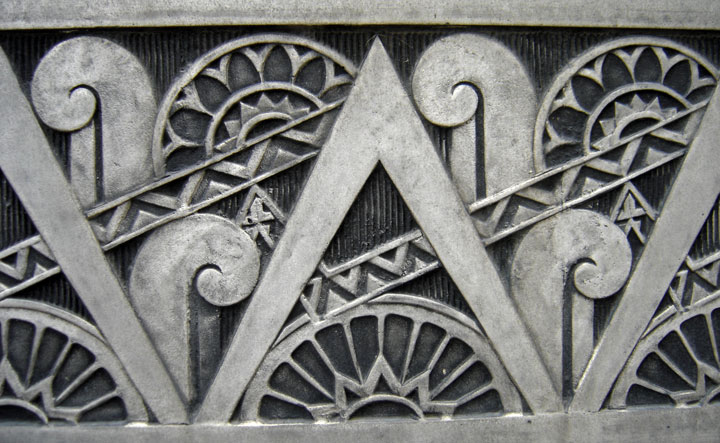
Buildings flanking the square include the Liberty Building, the Main Court
Building, 10 Lafayette Square, the Rand Building (14 Lafayette Square), and the
Buffalo & Erie County Public Library (One Lafayette Square). The south side of
the square hosts two historic buildings: the 300-room Lafayette Hotel, designed
by Louise Blanchard Bethune in 1904; and the Brisbane building, designed by
Milton E. Beebe and erected by James Mooney and James Brisbane in 1894–5. The
corner north of the current library and northeast of the square once hosted the
Buffalo Savings Bank building that was demolished in 1922 and now hosts a
parking lot.
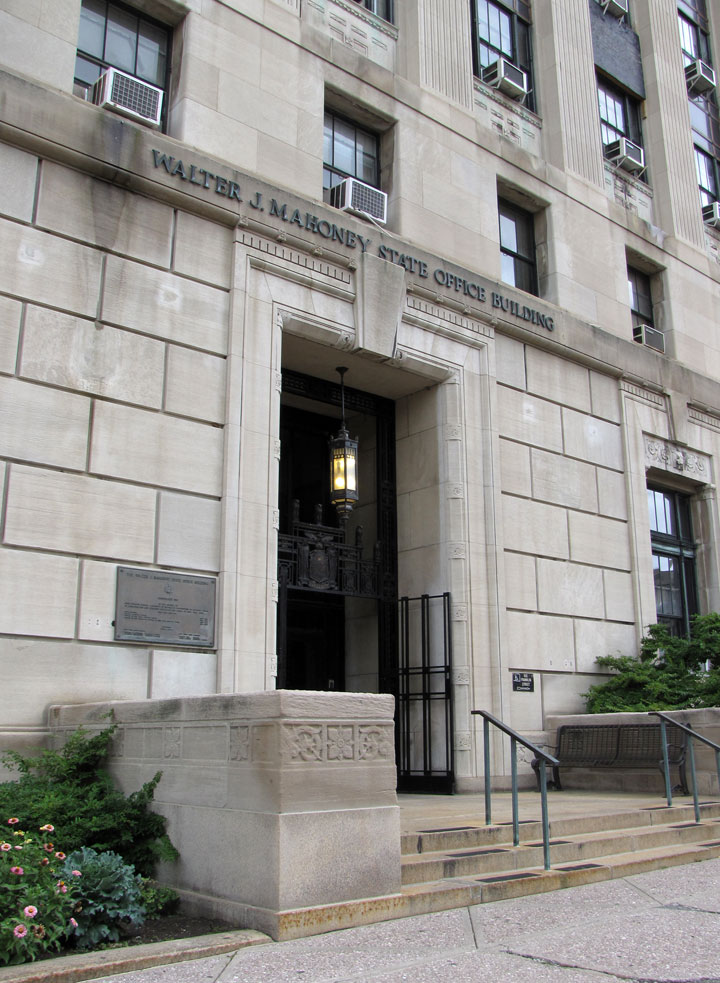
State Office building
Lafayette Square is served by several Metro Bus routes and the Lafayette Square rapid transit rail station of Buffalo's Metro Rail system. In 2003, Lafayette Square became the site of the first free municipal wifi hotspot in the city.
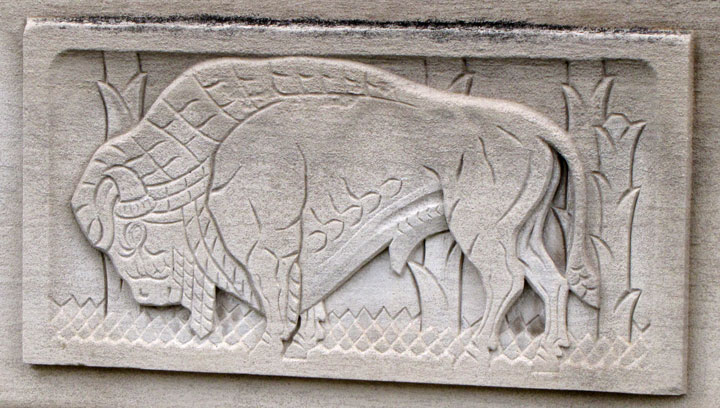
The square once was surrounded by an iron fence that was no longer present by
1905. By the 1860s, the square was a heavily wooded park. In 1876-7, trees that
lined the square along main street were removed.

Lafayette Square was the last park in the heart of the city, but the
commercialization of the downtown area caused vehicular space demands. The
original park like square was originally viewed by urban planners as an
impediment to cross-town traffic. In 1912, the Buffalo Common Council authorized
the extension of Broadway Avenue to Main Street through Lafayette Square, which
reduced the size of the square "to devote to street purposes all that part of
the Square except for a small circle around the Soldiers and Sailors Monument."
The square has since been redeveloped a few times and is now more of a
thoroughfare than a park. In 1920, the square circumscribed a vehicular circle
with the monument in the center surrounded by sidewalks and grass.

The monument's shaft supports a 10-foot-6-inch (3.2 m) female
figure, and four 8-foot (2.4 m) bronze statues, representing the infantry,
artillery, cavalry and navy, sculpted by Caspar Buberl, which face the four
cardinal points. Bronze bas-reliefs encircle the column above the statues. The
female figure is an allegorical figure representing the Union. By the time of
the 1979 report for the Mayor's Committee on the Arts and Cultural Affairs, two
plaques were missing from the monument.
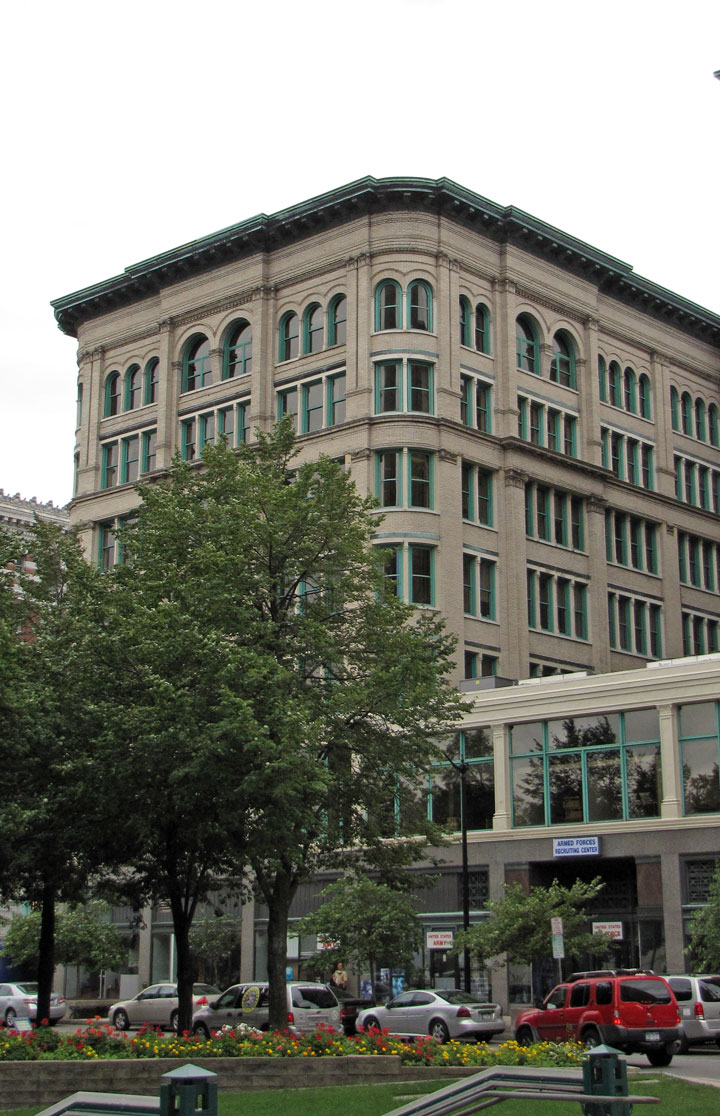

The dedication on the west (Main Street) side honors those who laid down their
lives "in the war to maintain the union for the cause of their country and of
mankind." Half of Abraham Lincoln's Gettysburg Address graces the east side of
the monument. Several bas-relief panels feature scenes of Lincoln's original
cabinet: Treasury Secretary Salmon Chase, Secretary of State William H. Seward,
Attorney General Edward Bates, Postmaster General Montgomery Blair, Secretary of
the Interior, Caleb Smith, Secretary of the Navy Gideon Welles, Major General
Winfield Scott, and Secretary of War Simon Cameron.
Text from Wikipedia

looking toward the Lafayette Hotel
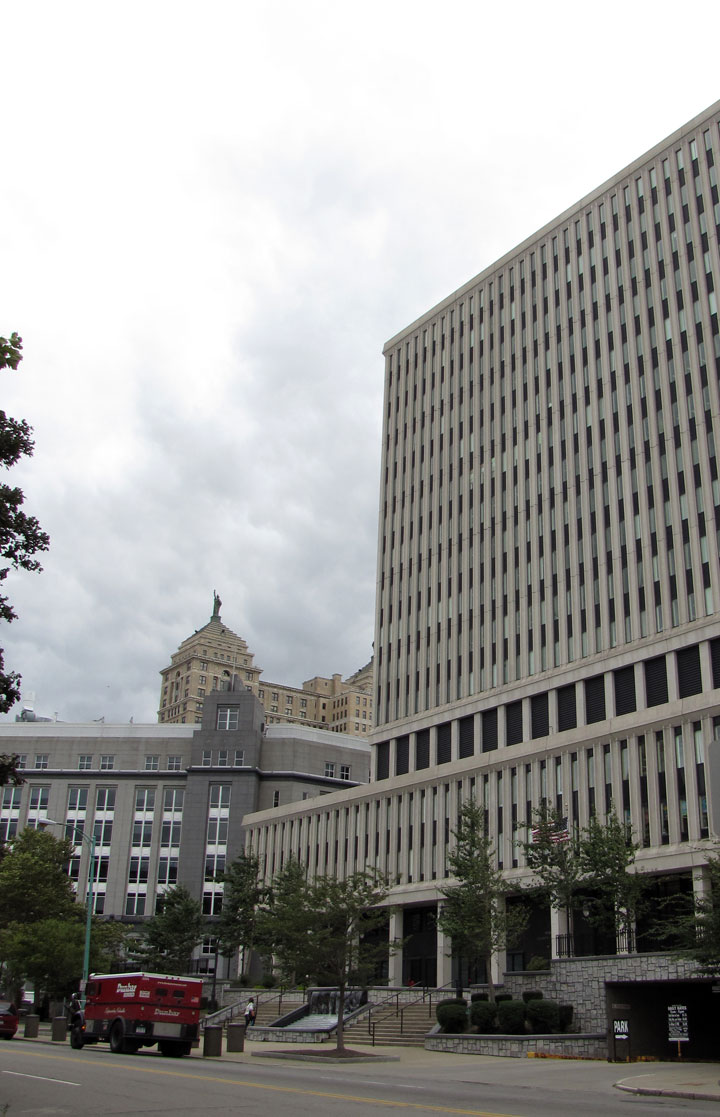
looking toward Liberty building